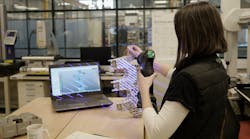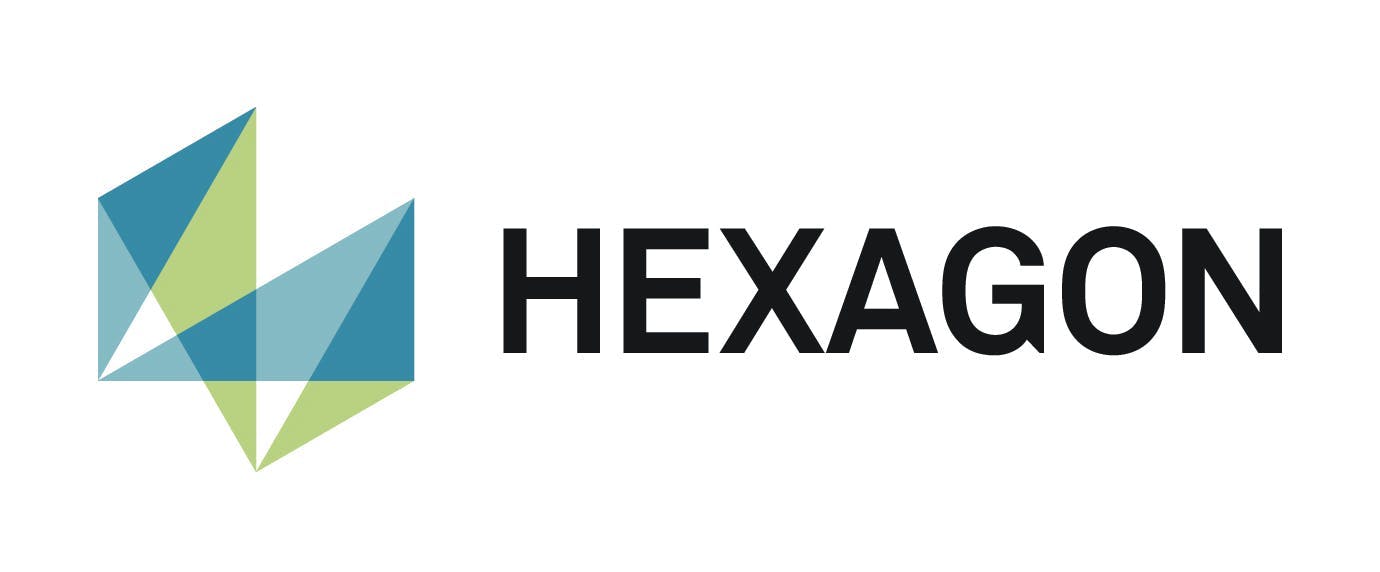Advanced Handheld 3D Scanners Empower Manufacturing Innovation
Three-dimensional (3D) scanning revolutionized product development and quality inspection in manufacturing, but traditional measurement technologies are not the most practical solution for lower skilled operators or challenging locations. Fortunately, advances in handheld 3D scanners allow users to scan what they need, where they need, empowering manufacturers to innovate faster — even in complicated applications.
3D scanning technologies streamline the manufacturing production process by capturing the precise dimensions, geometries and surface data of physical objects and converting them into accurate representations that are used for prototype creation, reverse engineering and quality control analysis.
While 3D scanners have enabled manufacturers to speed up product development and get high-quality products to market faster and with more frequency, traditional 3D scanning technologies are not always the best fit for applications that are difficult to measure due to instabilities, large part size or challenging locations, says Joel Martin, director of product management for North America with Hexagon. “Flexible measurement that brings the scanner to the part in difficult applications provides a unique solution for challenging-to-measure parts.”
The Case for Advanced Handheld 3D Scanners
In applications that require more mobility or where it’s not possible or cost-effective to bring the part to the scanner, user-friendly portable 3D scanners are advantageous, says Martin.
“For example, when developing retrofit parts in the nuclear energy sector, the parts typically can’t be removed and taken to the scanner,” he says. “Further, nuclear sites are often radioactive environments, so the amount of time spent there is critical to the safety of the individual scanning the part. Therefore, taking measurements very quickly in situ is imperative. In this demanding application, a scanning solution that is portable and easy to use allows operators to bring it into the environment, get the data and get out as soon as possible.”
Off-highway equipment is another application in which handheld 3D scanners are game changers. “While it might be possible to transport the vehicle to the scanner when a manufacturer needs to perform process verification on a piece of heavy equipment, there’s a significant cost associated with that. Instead, a portable tool can be taken to the site, allowing the operator to take measurements more cost-effectively,” he explains.
Another use case for handheld 3D scanning includes quality control practices in which a product is inspected upstream during development when it is more cost-effective and efficient to make changes. “Portable scanning tools can be implemented further upstream to collect data so manufacturers can make decisions about how they are building products earlier in the process so that it’s right the first time, allowing quality to become part of the process rather than an obstacle to innovation.”
Mobile Scanning Boosts Manufacturing Innovation and Efficiency
“Handheld scanners open up another avenue of usability and efficiency for manufacturers when it comes to design or quality control work, but only if the technology offers a higher level of vision with a lower barrier of entry,” says Martin.
“What is often needed isn’t more data, but rather the ability to measure physical objects using a solution that offers an easy-to-use workflow in a process that is more accessible to lower-skilled users,” he continues. “Manufacturers tell us they need to innovate faster and become more productive and efficient. Simplified, handheld 3D scanning is the solution.”
In response, Hexagon recently launched two new mobile scanners, ATLASCAN Max and MARVELSCAN. “The features of these handheld scanners, especially MARVELSCAN, empower manufacturers to be more reactive and get products to market faster,” says Martin.
First, the control of MARVELSCAN is similar to that of a video game controller, and the human interaction with both the hardware and software is as fluid as possible, allowing a short learning curve and low barrier to entry.
The application software also offers hole flash and edge capture, enabling even novice users to measure features quickly and accurately, independent of the scanning coverage, so there is no need to slow down when scanning over holes and edges, decreasing inspection times by as much as 50%. “Users simply scan over the part to collect the surface data and, at the same time, extract the critical features,” he says.
MARVELSCAN also features Hexagon’s patented reverse positioning technology, which allows the scanner to measure parts without any targets on the part or additional positioning units. “This feature allows users to perform small- and large-volume measurements without the need for additional cameras or steps,” Martin explains.
And, while traditional photogrammetry systems work with coded targets, the Galaxy Mode feature eliminates this and allows users to include the “Galaxy Bar” within the measurement area to secure better volumetric accuracy, increasing measurement precision and speed on medium-sized parts by as much as 30%.
Manufacturing Technology for Every Application
While easy-to-use, handheld 3D scanners increase the efficiency and cost-effectiveness of challenging applications, they are just one tool in the manufacturing technology toolbox, says Martin. “I could paint my whole house with a 4-inch paintbrush, but it would be a difficult process,” he says. “Similarly, a handheld device doesn’t replace articulated arms with scanners, structured light scanners, CMMs with scanners or other measurement solutions; rather, it complements them. We offer an inclusive platform of technologies so we can empower manufacturers to efficiently and effectively develop products and conduct quality inspections using the most suitable tool for the job.”
Sponsored by:





